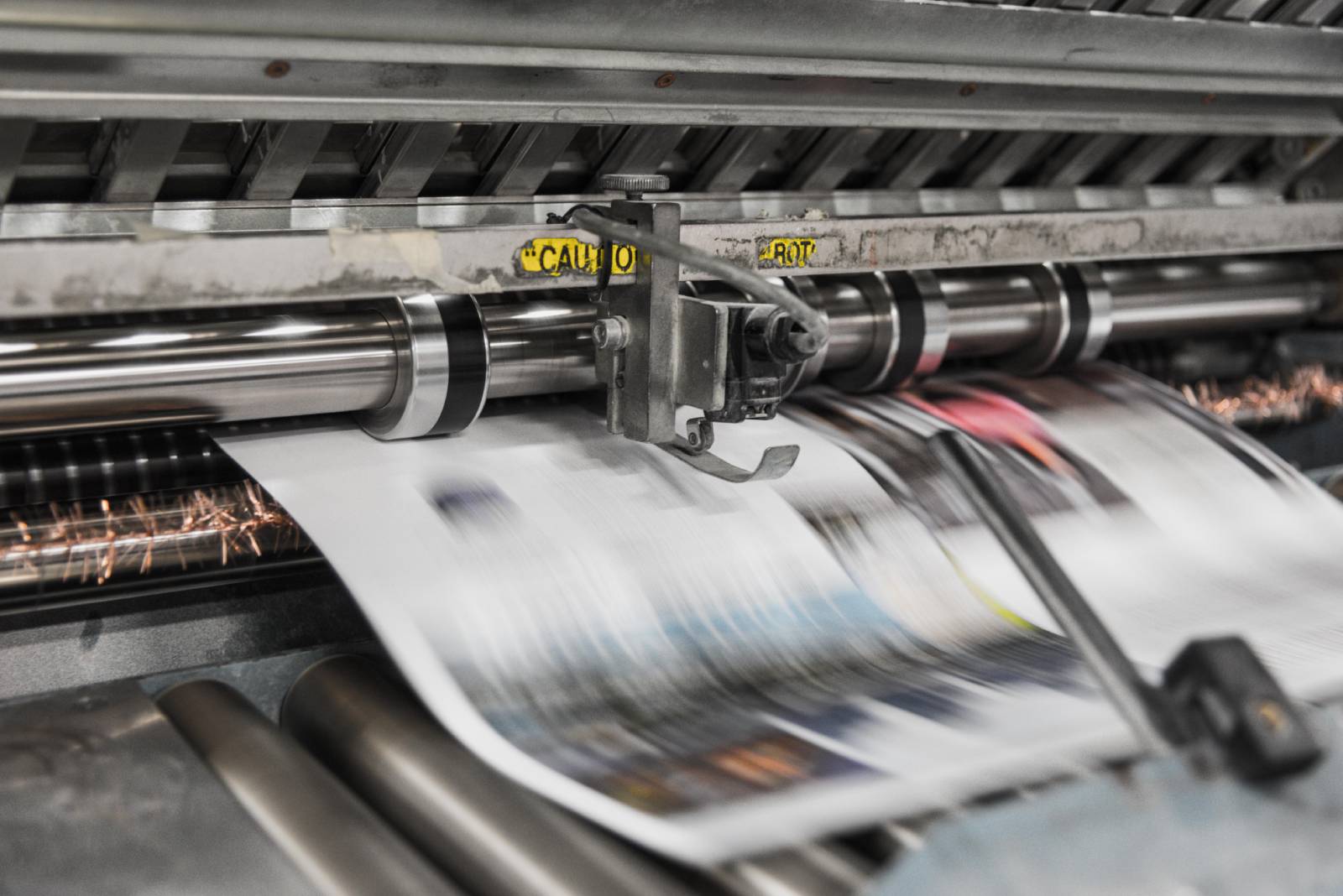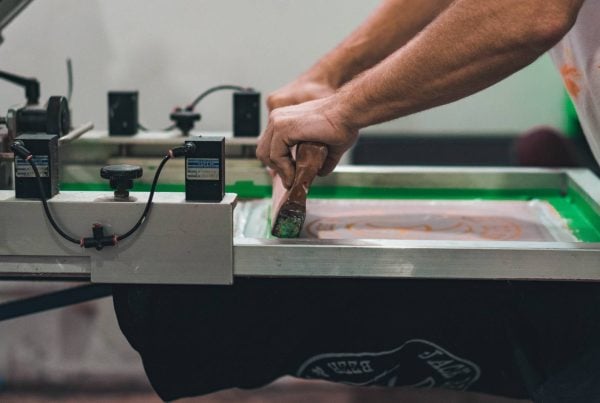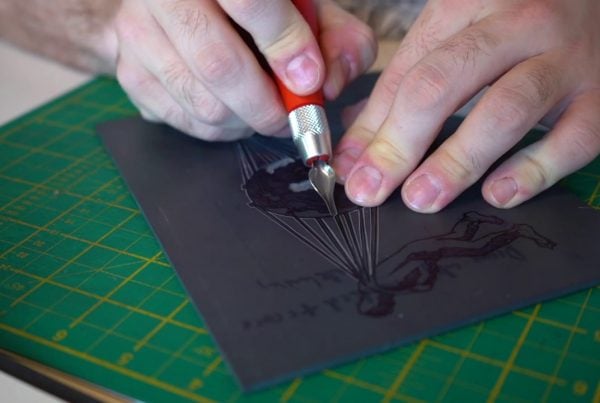Lithography, derived from the Greek words ‘lithos’ (stone) and ‘graphein’ (to write), is a traditional method of printmaking that has significantly contributed to the printing industry. Invented by Alois Senefelder in Germany in 1796, lithography printing relies on the principle that oil and water do not mix. It was originally used as a method for printing text or artwork onto paper or other suitable material.
Table of Contents
History of Lithography Printing
In the late 18th century, Alois Senefelder discovered lithography as he was seeking a cost-effective method of publishing his plays. He found that he could write on a smooth limestone surface with a greasy substance and then print impressions of it after wetting the stone’s surface. As the stone was kept moist, the areas not covered by the greasy substance would repel the oily ink while the parts covered by the design would attract it. The use of lithography rapidly expanded during the 19th and 20th centuries, which saw it become a staple in the printmaking world. It was primarily used for art reproduction, cartography, and printing text, but its usage has evolved over time, adapting to the needs of the modern world.
For more on the history of lithography, visit Britannica’s article on the subject.
Lithography in Art
Since its inception, lithography has been widely used in the art world. Artists appreciated the ability it provided to create multiple reproductions of their works. Because of its unique nature, lithography allowed artists to draw their designs directly onto the plate, thus maintaining the originality and spontaneity of their work. Notable artists who used lithography include Henri de Toulouse-Lautrec, Edvard Munch, and Pablo Picasso.
- Honore Daumier: Known for his social and political commentary, Daumier made extensive use of lithography for his caricatures and cartoons.
- Henri de Toulouse-Lautrec: Lautrec is famous for his bold, provocative posters for Parisian cabarets, which were produced using the chromolithography method.
- Marc Chagall: Chagall made significant contributions to the revival of lithography in the mid-20th century with his vividly coloured, dreamlike compositions.
More about lithography in art can be found at the MoMA website.
Lithography in Commercial Printing
In the commercial sector, lithography – specifically offset lithography – became the dominant form of printing during the 20th century. With its ability to efficiently produce high volumes of prints, it’s widely used for books, newspapers, stationery, packaging, and much more. Hickman Design is a great example of a company that once operated in this field, using a 6-colour Heidelberg litho press. Heidelberg presses are highly regarded in the printing industry for their quality, reliability, and efficiency. They allow for precise colour matching, making them perfect for producing vibrant, high-quality prints. The process at Hickman Design would have looked something like this:
- The artwork is created and set up in a digital format.
- The digital files are used to make printing plates, with one plate for each colour to be used in the print.
- Each plate is installed onto the press, and the colours are set up. The first plate is inked and then water is applied to the non-image area.
- The inked image is transferred (or “offset”) from the plate to a rubber blanket and then onto the paper.
- This process is repeated for each colour. Once all colours have been applied, the final image appears on the paper.
For a deeper understanding of commercial lithography, see the video below from Adobe AI.
Comparison of Lithography with Other Forms of Printing
| Printing Method | Description | Advantages | Disadvantages |
|---|---|---|---|
| Lithography | Uses a flat plate. The image and non-image areas are on the same plane and depend on the repulsion of oil and water. | High-quality image, efficient for large print runs, economical per unit over high volumes. | Set-up cost can be high for small volumes, slower turnaround due to setup time. |
| Letterpress | A relief printing process where the text or image is on a raised surface. | Beautiful, tactile impression, ideal for business cards and invitations. | Less suitable for large print runs, colour options may be limited. |
| Flexography | Uses flexible relief plates, often used for packaging, labels, and other forms of printing on uneven surfaces. | Can print on a wide range of substrates, quick production speed. | Costly plate setup, not ideal for high resolution, detailed images. |
| Digital Printing | Uses toner or larger printers that do use liquid ink. Digital files such as PDFs or design files are sent directly to the digital printing press to print the document. | Low setup costs, allows for on-demand printing, and modification of the image (variable data) used for each impression. | Unit cost per piece is typically higher than with lithography, not ideal for large volume print runs. |
For more detailed comparisons of these printing methods, visit this thorough breakdown.
First-Hand Observations of the Heidelberg Litho Press
My experience in the printing industry, which I channel into my work at Hickman Design, has offered me several enlightening insights, particularly regarding the lithography printing process. One of the standout experiences in my career was the opportunity to observe a 6-colour Heidelberg litho press in operation in a commercial setting.
The Heidelberg litho press is a marvel in the printing world, revered for its high-quality output and precise colour matching. Witnessing the impressive speed, efficiency, and meticulous colour coordination of this press in action was a remarkable learning experience.
This commercial lithography process presented a stark contrast to my earlier exposure to the more traditional methods of fine art lithography. The fine art approach, while exquisite in its detail and craftsmanship, often involves a slower, more painstaking process. On the other hand, the Heidelberg press, a paragon of commercial lithography, was designed for speed, precision, and high-volume production.
These two facets of lithography – the meticulous craftsmanship of fine art and the high-speed efficiency of commercial printing – allowed me to gain a broader and deeper understanding of this versatile printing technique. From the careful crafting of artwork on a litho stone to the rapid press of a Heidelberg machine, the varied uses and adaptations of lithography printing serve as a testament to its lasting relevance in both the art and commercial world.
Lithography, whether used for art or commercial printing, remains a crucial method in the printing world. Its role in the evolution of print technology cannot be overstated, and its influence persists in various forms of modern print technologies.








